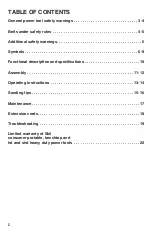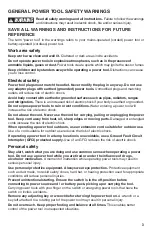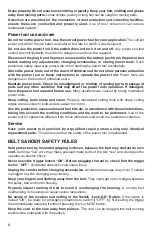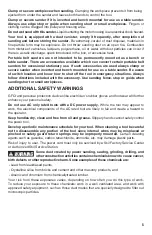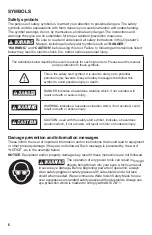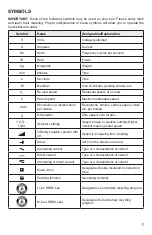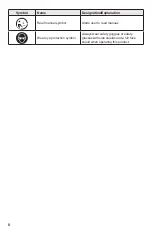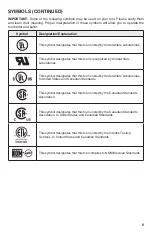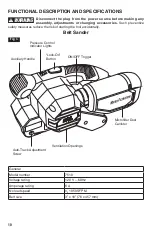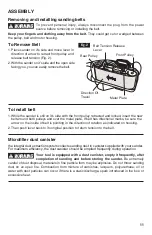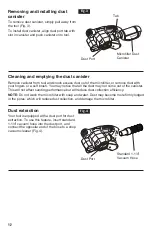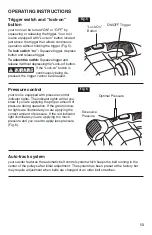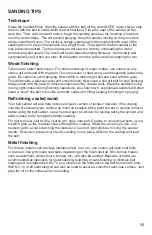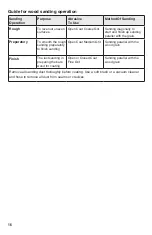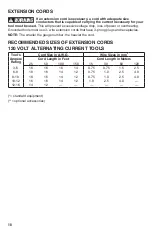
5
Clamp or secure workpiece when sanding .
Clamping the workpiece prevents it from being
ejected from under the sander and leaves both hands to control the tool.
Clamp or secure sander if it is inverted and bench mounted for use as a table sander .
Always use edge stop or guide when sanding short or small workpieces .
Fingers or
clothing can be dragged into pulley and housing area.
Do not wet sand with this sander .
Liquids entering the motor housing is an electrical shock hazard.
Your tool is equipped with a dust canister, empty it frequently, after completion of
sanding and before storing the sander .
Be extremely careful of dust disposal, materials in
fine particle form may be explosive. Do not throw sanding dust on an open fire. Combustion
from mixture of varnishes, lacquers, polyurethane, oil or water with dust particles can occur if
there is a static discharge, spark introduced in the box, or excessive heat.
Portable belt sanders are not intended to be permanently mounted as a bench or
table sander . There are accessories available which can convert certain portable belt
sanders for occasional stationary use . If such accessories are used always clamp or
secure sander when inverted and bench mounted for use as a table sander . Be aware
of switch location and know how to shut off the tool in emergency situations . Always
follow directions included with the accessory . Use sanding fence, stop or guide when
sanding short or small workpieces .
ADDITIONAL SAFETY WARNINGS
GFCI and personal protection devices like electrician’s rubber gloves and footwear will further
enhance your personal safety.
Do not use AC only rated tools with a DC power supply .
While the tool may appear to
work, the electrical components of the AC rated tool are likely to fail and create a hazard to
the operator.
Keep handles dry, clean and free from oil and grease .
Slippery hands cannot safely control
the power tool.
Develop a periodic maintenance schedule for your tool . When cleaning a tool be careful
not to disassemble any portion of the tool since internal wires may be misplaced or
pinched or safety guard return springs may be improperly mounted .
Certain cleaning
agents such as gasoline, carbon tetrachloride, ammonia, etc. may damage plastic parts.
Risk of injury to user. The power cord must only be serviced by a Skil Factory Service Center
or Autho rized Skil Service Station.
WARNING
Some dust created by power sanding, sawing, grinding, drilling, and
other construction activities contains chemicals known to cause cancer,
birth defects or other reproductive harm . Some examples of these chemicals are:
•
Lead from lead-based paints,
•
Crystalline silica from bricks and cement and other masonry products, and
•
Arsenic and chromium from chemicallytreated lumber.
Your risk from these exposures varies, depending on how often you do this type of work.
To reduce your exposure to these chemicals: work in a well ventilated area, and work with
approved safety equipment, such as those dust masks that are specially designed to filter out
microscopic particles.


